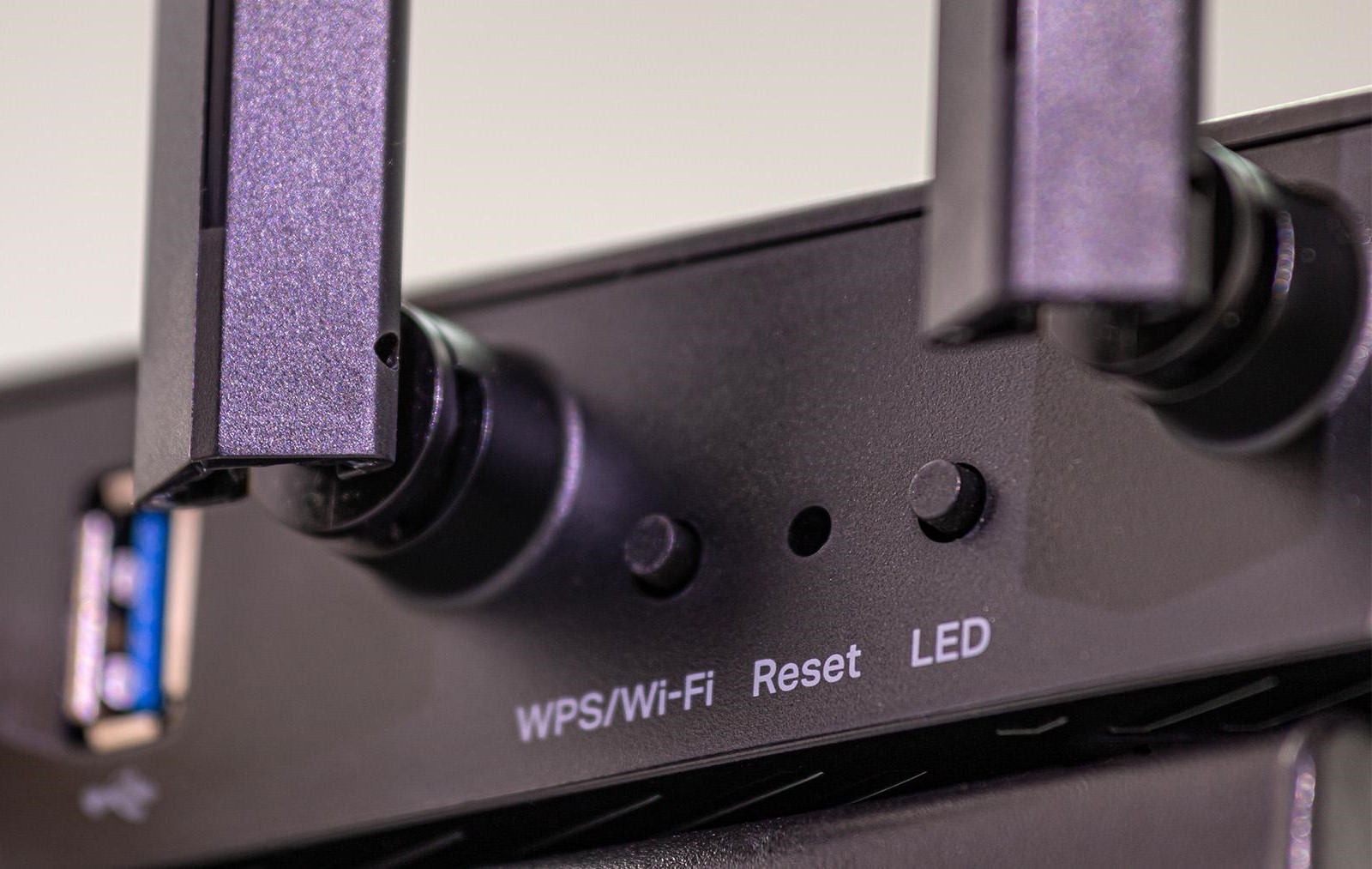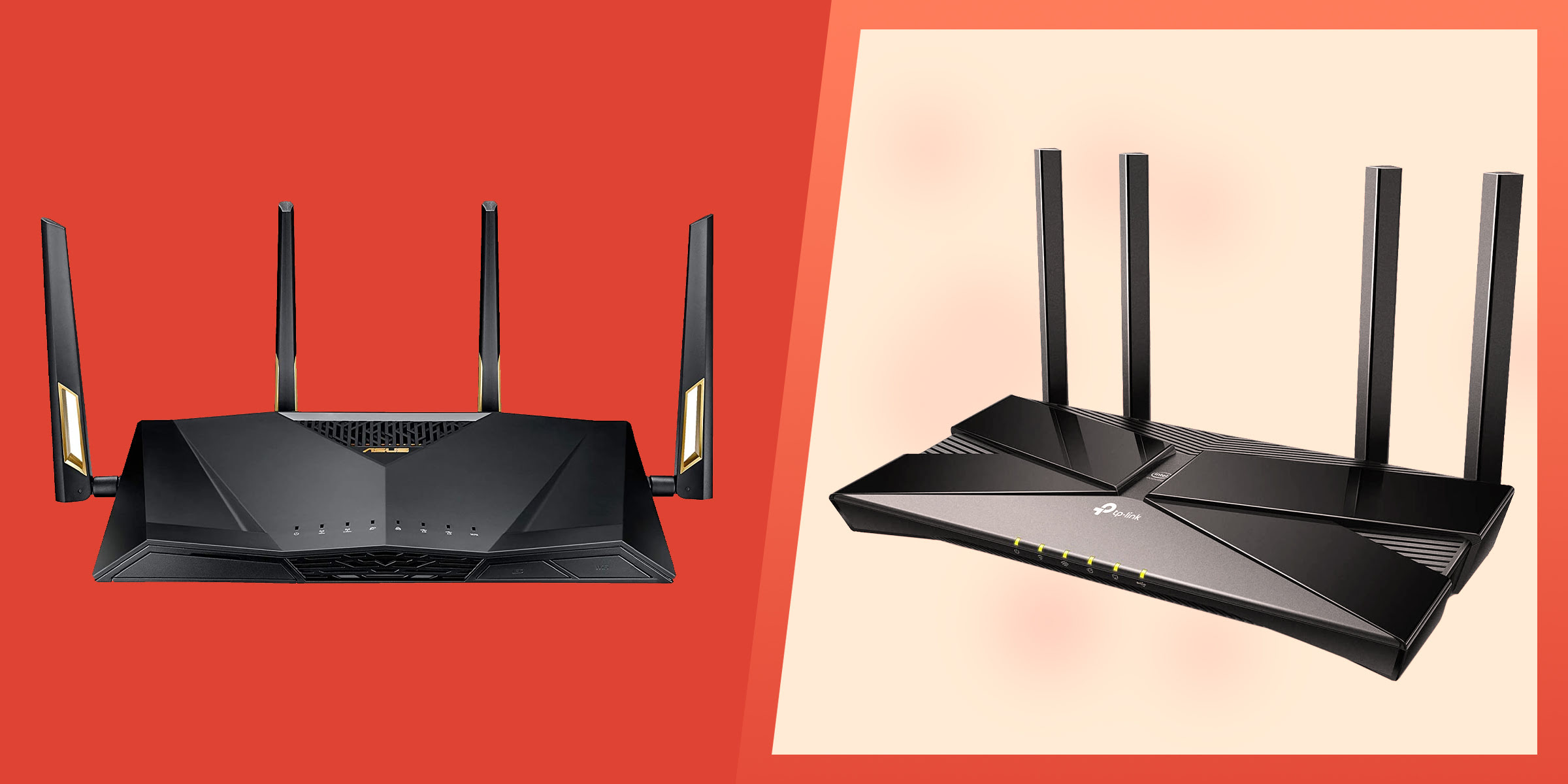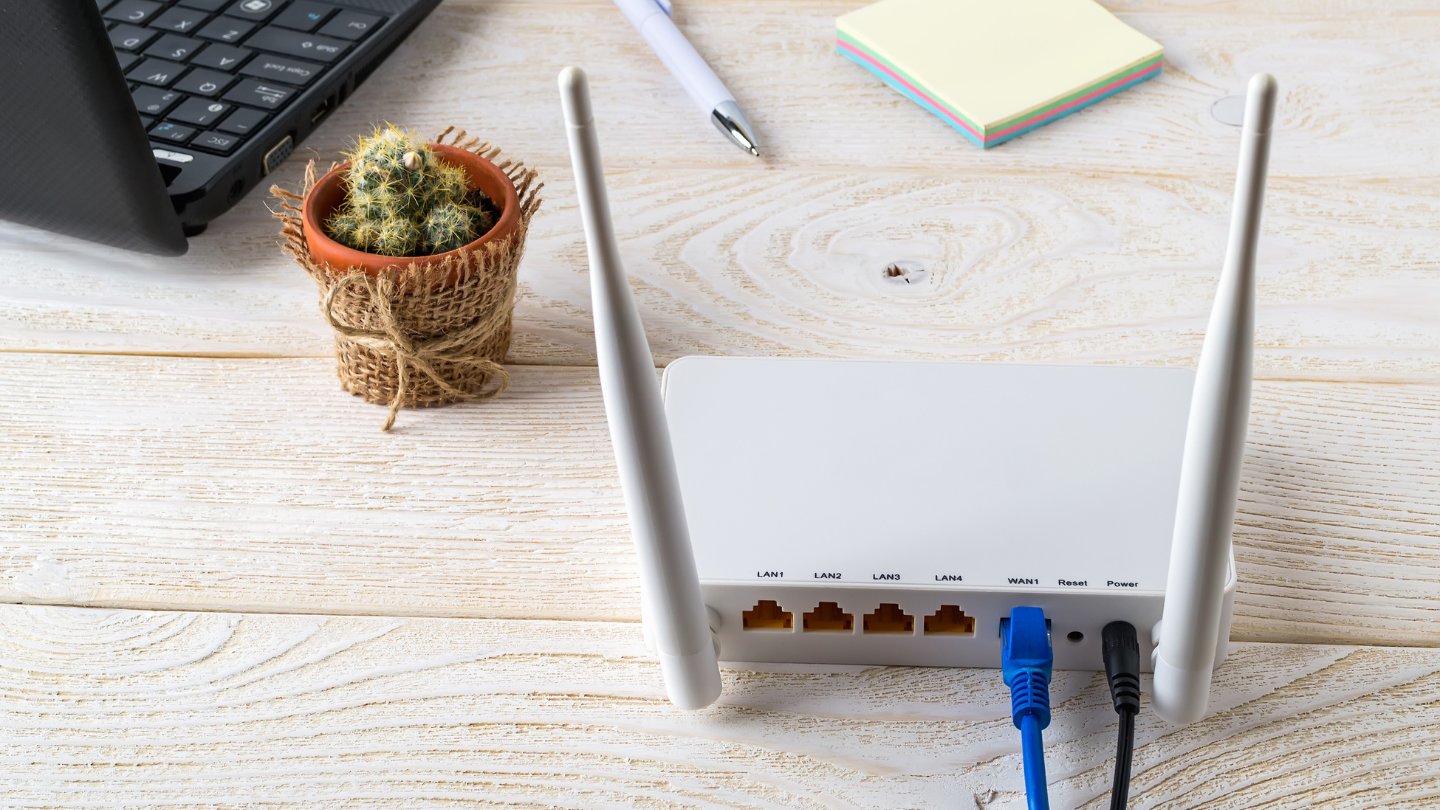Home>Technology>Smart Home Devices>How Does A Wi-Fi Router Work


Smart Home Devices
How Does A Wi-Fi Router Work
Modified: January 4, 2024
Discover how smart home devices connect to the internet with a Wi-Fi router. Learn the inner workings and technology behind this essential home networking device.
(Many of the links in this article redirect to a specific reviewed product. Your purchase of these products through affiliate links helps to generate commission for Storables.com, at no extra cost. Learn more)
Introduction
Read more: What To Do If Wi-Fi Router Is Not Working
Introduction
Wi-Fi routers have become an indispensable part of modern life, enabling seamless connectivity for a wide range of smart devices. These devices form the backbone of our interconnected world, allowing us to stream entertainment, work remotely, and control smart home devices with unparalleled ease. But have you ever wondered how these magical boxes actually work?
In this article, we will delve into the inner workings of Wi-Fi routers, exploring the basic components, the transmission of Wi-Fi signals, data transmission and reception, and the security features that safeguard our digital interactions. By gaining a deeper understanding of these mechanisms, you will not only appreciate the technology that powers your internet connection but also be better equipped to optimize your home network for enhanced performance and security.
So, let's embark on a journey into the heart of Wi-Fi technology, unraveling the mysteries behind these ubiquitous devices and gaining insights that will empower you to make the most of your digital experiences.
Key Takeaways:
- Wi-Fi routers are like digital traffic controllers, using invisible radio waves to connect our devices. Understanding their components and signals can help us optimize our home networks for better performance.
- Wi-Fi routers act as digital guardians, protecting our data through encryption, firewalls, and secure authentication. Learning about their security features empowers us to keep our digital interactions safe and secure.
Basic Components of a Wi-Fi Router
At first glance, a Wi-Fi router may appear to be a simple device, but it actually comprises several essential components that work in unison to facilitate wireless connectivity. Understanding these components is key to comprehending the functionality of a Wi-Fi router.
1. Processor and Memory: The processor serves as the brain of the router, executing various tasks such as routing data and managing network traffic. It is complemented by memory, which stores the router’s firmware, configuration settings, and temporary data.
2. Wireless Radio: This component enables the router to transmit and receive wireless signals, operating on specific frequencies such as 2.4 GHz and 5 GHz. It is responsible for establishing connections with Wi-Fi-enabled devices within its range.
3. Antennas: Antennas play a crucial role in propagating Wi-Fi signals, allowing for broader coverage and improved signal strength. Routers may feature internal or external antennas, with the latter often offering greater flexibility for optimizing signal distribution.
4. Ethernet Ports: These ports enable wired connections to the router, providing reliable network access for devices such as desktop computers, gaming consoles, and smart TVs. They are essential for ensuring stable connections in scenarios where wireless connectivity may be unreliable or congested.
5. Switch: The switch facilitates the distribution of data within the local network, allowing connected devices to communicate with each other. It plays a pivotal role in managing the flow of information and ensuring efficient data transfer.
6. Power Supply: The power supply unit provides the necessary electrical energy to operate the router, converting AC power from the outlet into the DC power required by the device’s internal components.
By familiarizing yourself with these fundamental components, you can gain a clearer understanding of the intricate mechanisms that enable a Wi-Fi router to deliver seamless connectivity to a myriad of devices. In the next section, we will explore how Wi-Fi signals are transmitted, shedding light on the invisible pathways that connect our digital world.
How Wi-Fi Signals are Transmitted
Wi-Fi signals, the invisible carriers of digital connectivity, operate on the principles of radio wave transmission. Understanding how these signals are propagated is essential for comprehending the reach and limitations of wireless networks.
1. Radio Frequency Modulation: Wi-Fi signals are transmitted using radio frequency (RF) modulation, where data is encoded onto radio waves. This process involves modulating the amplitude, frequency, or phase of the waves to represent the digital information being transmitted.
2. Wireless Standards: Wi-Fi signals adhere to specific wireless standards, such as 802.11n, 802.11ac, and the latest 802.11ax (Wi-Fi 6). These standards define the protocols and technologies used for wireless communication, ensuring compatibility and optimal performance across different devices.
3. Channel Allocation: Wi-Fi routers utilize different channels within the 2.4 GHz and 5 GHz frequency bands to transmit signals. Channel allocation helps minimize interference and congestion, allowing multiple routers to coexist within the same vicinity without causing significant signal degradation.
4. Beamforming Technology: Some modern Wi-Fi routers employ beamforming technology, which enables the router to focus its signal in the direction of connected devices. This targeted approach enhances signal strength and reliability, especially for devices located at a distance from the router.
5. Signal Propagation: Wi-Fi signals propagate through the air, encountering obstacles such as walls, furniture, and electronic devices. Understanding the factors that affect signal propagation, such as signal attenuation and reflection, can help optimize the placement of the router for improved coverage and performance.
By delving into the intricacies of Wi-Fi signal transmission, you can gain a deeper appreciation for the technological marvel that enables seamless wireless connectivity. In the subsequent section, we will explore the process of data transmission and reception, unraveling the mechanisms that underpin the exchange of digital information within a Wi-Fi network.
Data Transmission and Reception
When you stream a movie on your tablet, video call a friend, or remotely control a smart thermostat, data is being transmitted and received within your Wi-Fi network. This exchange of digital information is made possible by the intricate processes that govern data transmission and reception in Wi-Fi routers.
1. Packet Switching: Data is transmitted in the form of packets, which are discrete units of information. These packets travel through the network, taking varied paths to reach their destination. The router efficiently switches and routes these packets to ensure timely and accurate delivery.
2. Modulation and Demodulation: As data is transmitted wirelessly, it undergoes modulation, where it is encoded onto the carrier signal, and demodulation, where the original data is extracted from the received signal. These processes enable the conversion of digital information into radio waves for wireless transmission and its subsequent retrieval at the receiving end.
3. Multiple Input, Multiple Output (MIMO): Many modern Wi-Fi routers incorporate MIMO technology, which utilizes multiple antennas for transmitting and receiving data. MIMO enhances the capacity and efficiency of wireless communication by enabling the simultaneous transfer of multiple data streams.
4. Quality of Service (QoS): QoS mechanisms within routers prioritize different types of data traffic, ensuring that time-sensitive applications, such as voice and video calls, receive preferential treatment to maintain optimal performance and minimize latency.
5. Wireless Standards and Data Rates: The adoption of advanced wireless standards, such as 802.11ac and 802.11ax, has significantly increased the achievable data rates within Wi-Fi networks. These standards leverage technologies like multi-user MIMO and higher channel bandwidth to deliver faster and more reliable data transmission.
By unraveling the intricacies of data transmission and reception, you can gain a deeper understanding of the mechanisms that enable seamless communication within a Wi-Fi network. In the subsequent section, we will explore the security features that safeguard Wi-Fi networks from unauthorized access and cyber threats.
When setting up a Wi-Fi router, place it in a central location to ensure better coverage throughout your home. Avoid placing it near large metal objects or other electronic devices that may interfere with the signal.
Read more: What Is The Wi-Fi Router
Security Features of Wi-Fi Routers
As the gateway to our digital world, Wi-Fi routers play a crucial role in safeguarding our online interactions and personal data from potential threats. Understanding the security features implemented in Wi-Fi routers is essential for maintaining a secure and resilient home network.
1. Encryption Protocols: Wi-Fi routers employ encryption protocols, such as WPA2 (Wi-Fi Protected Access 2) and the more recent WPA3, to secure wireless communications. These protocols encrypt data transmitted between the router and connected devices, preventing unauthorized access and eavesdropping.
2. Network Segmentation: Many routers support the creation of separate network segments, such as guest networks, to isolate devices and restrict their access to sensitive resources. Network segmentation enhances security by preventing unauthorized devices from directly interacting with the primary network.
3. Firewall Protection: Routers often integrate firewall capabilities to monitor and control incoming and outgoing network traffic. Firewalls help filter potentially malicious data packets and protect the network from unauthorized access attempts and cyber attacks.
4. Secure Authentication: Wi-Fi routers utilize secure authentication mechanisms, such as WPA2-PSK (Pre-Shared Key) and WPA3-SAE (Simultaneous Authentication of Equals), to verify the identity of devices attempting to connect to the network. Strong authentication protocols mitigate the risk of unauthorized devices gaining access to the network.
5. Firmware Updates: Regular firmware updates issued by router manufacturers address security vulnerabilities and introduce enhancements to mitigate emerging threats. Keeping the router’s firmware up to date is crucial for maintaining a secure and resilient network environment.
6. Access Control and Monitoring: Advanced routers offer features for granular access control and network monitoring, allowing users to define access policies, monitor connected devices, and detect anomalous behavior that may indicate security breaches.
By leveraging these security features, Wi-Fi routers fortify our home networks against a myriad of cyber threats, ensuring that our digital interactions remain private and secure. As we conclude our exploration of Wi-Fi router technology, it is evident that these devices are not merely conduits for internet connectivity but also bastions of digital security and resilience.
Conclusion
In the fast-paced digital landscape of today, Wi-Fi routers stand as the unsung heroes that underpin our seamless connectivity and digital security. From the intricate components that form their physical structure to the invisible pathways of Wi-Fi signals and the robust mechanisms that safeguard our data, Wi-Fi routers embody the convergence of technology and connectivity.
By gaining insights into the inner workings of Wi-Fi routers, we not only cultivate a deeper appreciation for the technology that shapes our daily lives but also empower ourselves to optimize our home networks for enhanced performance and security. Understanding the basic components, the transmission of Wi-Fi signals, data transmission and reception, and the security features of Wi-Fi routers equips us with the knowledge to make informed decisions and take proactive measures to fortify our digital domains.
As we embrace the era of smart homes, connected devices, and ubiquitous digital interactions, the role of Wi-Fi routers becomes increasingly pivotal. These devices serve as the linchpin that enables us to stream entertainment, work remotely, and immerse ourselves in the boundless realms of the internet, all while ensuring that our digital footprints remain secure and protected.
So, the next time you connect to your Wi-Fi network to embark on a virtual journey, remember the intricate processes and technologies that converge within your humble Wi-Fi router, propelling you into the vast expanse of the digital universe. It is a testament to human ingenuity and innovation, encapsulated within a compact yet powerful device that has become an indispensable companion in our modern lives.
As we bid adieu to this exploration of Wi-Fi router technology, let us carry forward a newfound understanding of the marvels that underpin our digital connectivity, and may we continue to navigate the digital realm with confidence, curiosity, and a deep appreciation for the technology that unites us in the interconnected tapestry of the modern world.
Frequently Asked Questions about How Does A Wi-Fi Router Work
Was this page helpful?
At Storables.com, we guarantee accurate and reliable information. Our content, validated by Expert Board Contributors, is crafted following stringent Editorial Policies. We're committed to providing you with well-researched, expert-backed insights for all your informational needs.















0 thoughts on “How Does A Wi-Fi Router Work”